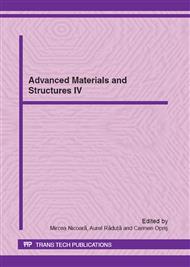p.382
p.388
p.395
p.400
p.406
p.412
p.416
p.422
p.428
Scanning Strategies for Aluminium and Plastic Parts
Abstract:
Reverse Engineering is a technique that is based on creating virtual models from existing products, is used to enhance or reproduce the look/function/role of the original part. It is used for shape design applications in different domains: aerospace, automotive, manufacturing, civil engineering, architecture, medicine, etc. For many years were used contact acquisition devices because of their ability to collect data with high accuracy, but this devices are slow during the acquisition process and constrained in digitization of small size objects. Thanks to the computer industry development and improvements in laser technology, in recent years have appeared scanning devices and scanning machine which have a smaller data acquisition time, and are able to scan a large variety of objects, whatever the size, shape or material. The advantages and disadvantages using scanning devices will be presented in the paper. In this paper we present an experiment conducted on Roland Laser Scanning Machine LPX-600, in which we want to determine factors influencing the surface quality of virtual models, obtained after scanning. For this experiment we used plastic and aluminum parts, cylindrical and prismatic shapes, both rotary scanning and plane scanning strategies and different scanning resolution. The results were processed and analyzed using Minitab.
Info:
Periodical:
Pages:
406-411
Citation:
Online since:
May 2012
Authors:
Keywords:
Price:
Сopyright:
© 2012 Trans Tech Publications Ltd. All Rights Reserved
Share:
Citation:


